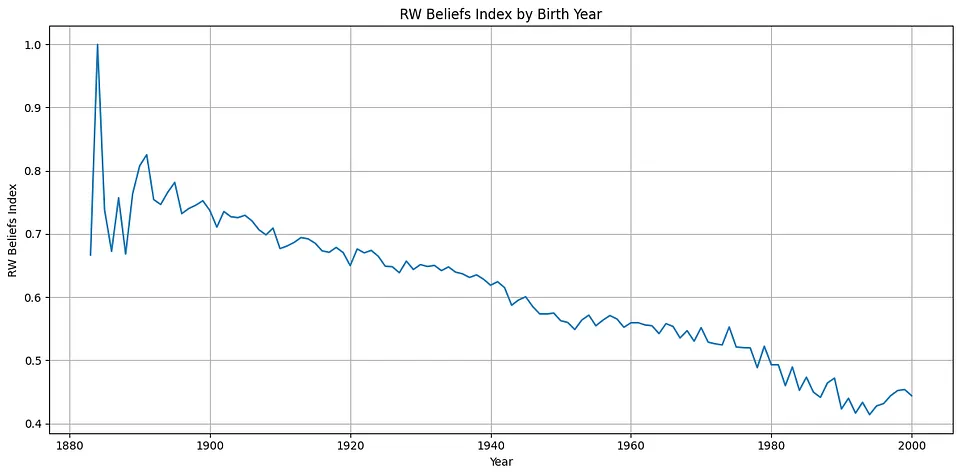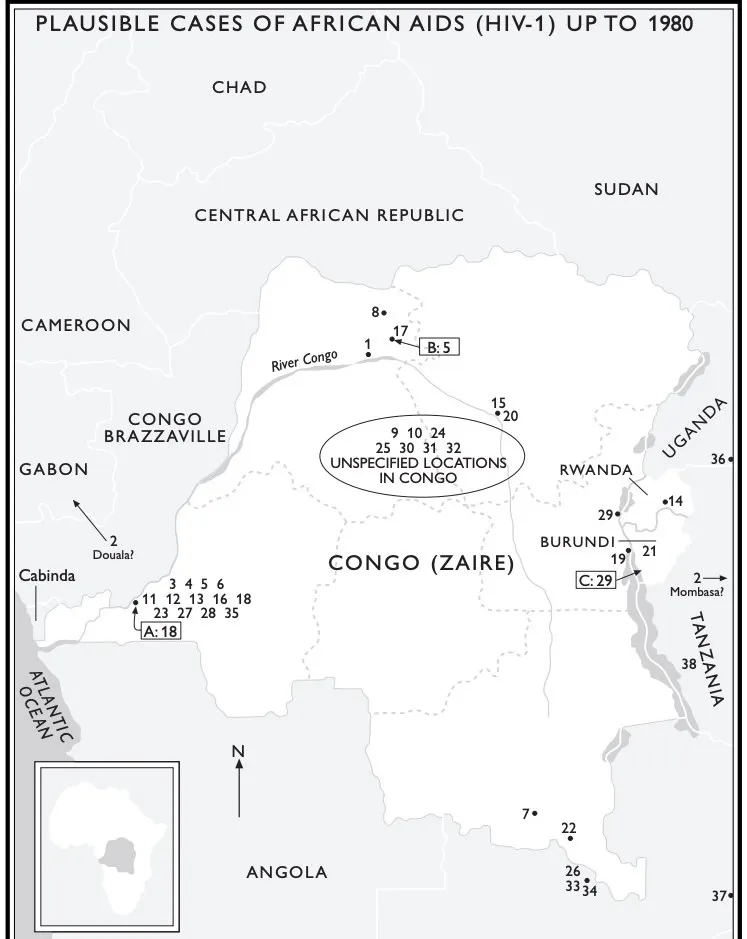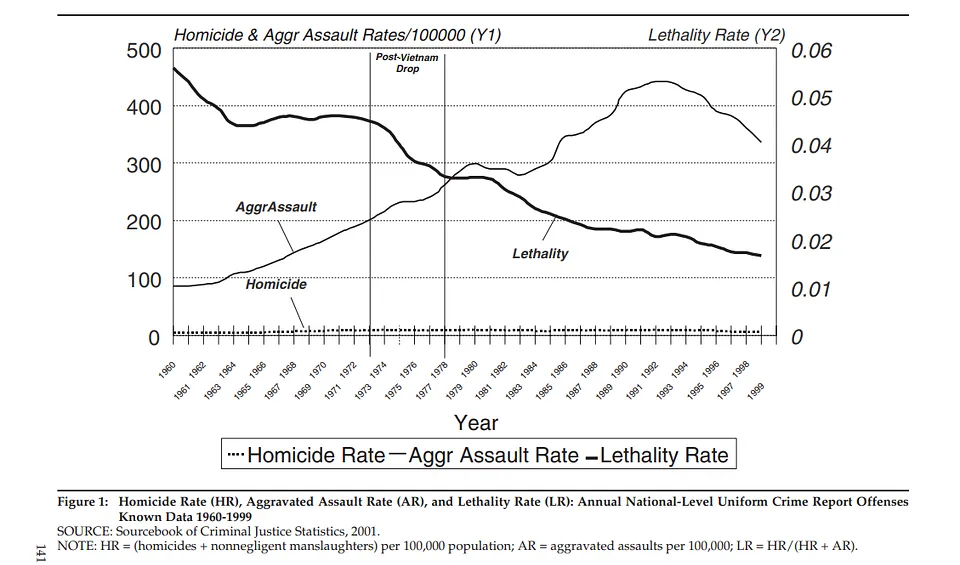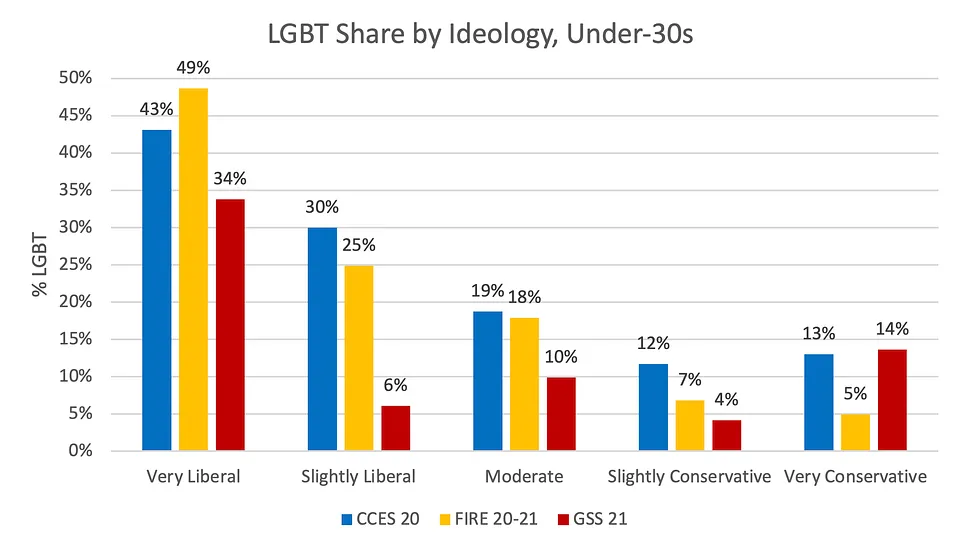Links and Thoughts #8 (August 2024)
– personal

This month’s compilation brings: a three-part article arguing against the mutational load hypothesis for the rise of leftism; an eloquent explanation of the O-ring theory of economic development and its implications; a defense of the oral polio vaccine hypothesis for the origins of AIDS; an article explaining the adjustments needed to adequately compare murder rates between eras and regions; and a detailed statistical analysis of the rise of LGBT identification.
Against the Mutational Load Hypothesis
- Links to articles: part 1, part 2, part 3
- Author: Arctotherium
- Date: 2023-10-09
- Source: Not With a Bang (Substack)

This is a long, detailed piece split into three articles that argues against the mutational load hypothesis for the rise of leftism, of which Joseph Bronski is perhaps the strongest proponent. 1 The mutational load hypothesis has two premises: that mutational load, that is, the accumulation of deleterious mutations, 2 has increased since at least the Industrial Revolution as a result of technological and economic advances, 3 and that mutational load causes leftism; 4 and its conclusion is that increased mutational load is the main, ultimate, or even the sole cause for the almost uninterrupted rise of leftism throughout the world in the last few centuries and especially in the West.
- In the first part, the author explains the mutational load hypothesis, the strong evidence showing that mutational load has indeed increased in the modern era, and the scarce and weak evidence that it partially causes leftism.
- In the second part, the author shows that even assuming that both premises are correct, the magnitude of the effect of mutational load on leftism cannot plausibly be large enough to explain such a large leftward political shift.
- In the third part, the author analyzes three historical case studies to further demonstrate that mutational load cannot plausibly be the cause of large increases in leftism: the decline of Ancient Rome, the political trends of Quebec and France, and the persistent rightism of breeder cults like Haredim Jews and the Amish.
Overall, it seems to me that Arctotherium makes a strong case against the mutational load hypothesis, and most likely mutational load is at best a secondary factor in the rise of leftism.
Nice Things and Why We Can’t Have Them
- Link to article
- Author: Marcel Dumas Gautreau
- Date: 2023-07-31
- Source: Bias Confirmations (Substack)
In this article, Gautreau provides a very interesting and fun to read explanation of the O-ring theory of economic development and its implications. The theory basically explains that some production processes, called O-ring production processes, 5 have two important distinctive features: the value of the entire product depends on all tasks of the process being completed successfully, and quantity can’t substitute for quality. Gautreau eloquently explains how these features of O-ring production processes result in increasing returns to skill and positive assortative matching for skill levels, and other related interesting implications including:
- How one person can, intentionally or unintentionally, destroy significantly more value than their labor was worth.
- Why small differences in quality can result in large differences in output and thus wages.
- Why high-skill firms hire higher-quality workers for higher wages even for lower-skill tasks.
- How the quantity of high-skill people in a company or country increases the incentive for investment in human capital.
- How differences in skill levels affect the patterns of specialization, trade, and immigration.
The article is a very interesting and accessible read, with many funny and quotable parts. I’ll highlight two of my favorite quotes, one from around the middle of the article, and one from the end:
I repeat myself: life isn’t fair, and man is an unequal creature. Unequal people get unequal incomes, and there’s nothing that will change that.
[…] The material benefits of this delicate productive arrangement are clear to every enterprise in a capitalist system.
The challenge is in avoiding the disasters to life, liberty, and property that emerge from skill mismatches.
Origins of AIDS: The polio vaccine hypothesis
- Link to article
- Author: Jonatan Pallesen
- Date: 2024-08-23
- Source: Aporia (Substack)

This article re-examines the oral polio vaccine (OPV) hypothesis for the origin of the human immunodeficiency virus (HIV), an alternative to the mainstream-accepted bushmeat hypothesis. The OPV hypothesis claims that HIV evolved from a related virus present in some of the chimpanzee kidney cells used in the large-scale experimental OPV trial carried out in the Belgian Congo from 1957 to 1960. Pallesen argues that there are several improbable coincidences that the bushmeat hypothesis doesn’t convincingly explain, while the OPV hypothesis is straightforwardly plausible, though he makes clear that it might still be incorrect. Furthermore, he provides compelling evidence and arguments that show that the claims used to allegedly refute the OPV hypothesis are either weak or entirely wrong. I particularly liked a brief aside section in which Pallesen highlights the curious parallels between the debate over the origins of AIDS and the debate over the origins of COVID-19. 6
Murder As Measuring Stick
- Link to article
- Author: Arctotherium
- Date: 2024-08-24
- Source: Not With a Bang (Substack)

The central thesis of the article is that while the murder rate is the best proxy we have for the overall crime rate due to its consistent definition and reporting, it’s still necessary to make adjustments to make valid comparisons between eras and regions. In particular, the most important thing to account for is that improvements in medical techniques and access have dramatically reduced the lethality of violent crime throughout the years, and thus the seemingly comparable murder rates in the West between 1960 and the present actually mask the fact that the level of overall crime and disorder is several times higher today. Furthermore, the trends of increasing obesity and wealth, along with improvements in forensics and surveillance technology, should make us expect crime to fall over time, so the deterioration of law and order throughout the years is even more glaring. The second point is that international comparisons must take into account that different countries have different ratios of murders to total crime due to differences in available weapons and the criminal inclinations of their demographics.
Fortunately, the author points out, crime is a relatively simple problem to solve due to the power law distribution of criminal behavior; as a small group of repeat offenders are responsible for the vast majority of crimes, returning to punishing criminals swiftly and harshly would pretty much solve the problem. 7 I’ll end by quoting the post’s final paragraph:
As such there’s no good reason European countries today (and ideally the United States) shouldn’t be as safe as Japan. All it would require is a criminal justice system as effective as it was two generations ago. Doing this would be just, make us much wealthier, and vastly improve our quality-of-life. Reaching Japan is realistic and should be the goal of Western criminal justice politics. Accept nothing less.
Born This Way? The Rise of LGBT as a Social and Political Identity
- Link to article
- Author: Eric Kaufmann
- Date: 2022-05-30
- Source: Center for the Study of Partisanship and Ideology (Substack)

This article is a thorough statistical analysis of the rise of LGBT identification in the West (particularly in the United States), the factors and trends underlying it, and its implications. The main takeaway is that while there has been an increase in actual non-heterosexual behavior (about 4%), the increase in LGBT identification has been much greater (about 11%), and the data suggests that sociopolitical factors likely explain most of this divergence. Another important takeaway that isn’t surprising at all is that, at least among young people, there is a strong correlation between mental health problems, “liberal” ideology (leftism), and LGBT identity. The article starts with a summary list of the key findings, so I won’t restate them all here. I hope they repeat this report with more recent data.
Footnotes
-
Read, for example, How important is the elite in wokeism?, a brief article in which Bronski states the mutational load hypothesis as follows: “Leftism is a psychological defect caused by high mutational load induced by the low selection pressures of modernity.” He provides various graphs and links to studies that purportedly support the hypothesis. ↩
-
In a footnote, the author clarifies that the technical definition of mutational load focuses on mutations that are deleterious to fitness, but in this case he is referring to “de novo mutations that degrade function (adaption execution) rather than fitness (number of surviving offspring).” Presumably, Bronski is using the term in the same manner. ↩
-
As the author explains, the increase in mutational load was mostly due to drastically decreased child mortality, which reduces purifying selection, while the other possible cause, increased paternal age, didn’t play a significant role. The author points out that paternal age surprisingly didn’t increase across the board throughout the 20th century. While people in the early 20th century started having children earlier, they also continued to have them for longer, so the average paternal age stayed roughly constant. ↩
-
In a footnote, the author says that, for the purposes of the article, leftism is defined as “the decay of group-selected behavior,” and he lists the following as indicators of leftism: “Feminism (particularly the decline of absolute monogamy and the loosening of sexual restraints on women), irreligiosity, lowered ethnocentrism, socialism, and promotion of sexual deviancy.” In other words, he defines leftism as anti-civilizational beliefs and behavior, which I find not only amusing but also very accurate. ↩
-
“The name is a reference to the 1986 Challenger shuttle disaster, a catastrophe caused by the failure of O-rings.” – O-ring theory of economic development, Wikipedia. ↩
-
People who know me are aware of the importance of the events of 2020 to my ideological development. I won’t elaborate here. ↩
-
Here, the author links to the article When few do great harm by Inquisitive Bird, which I featured on June’s Links and Thoughts post. ↩